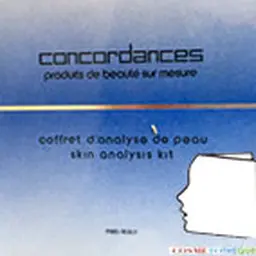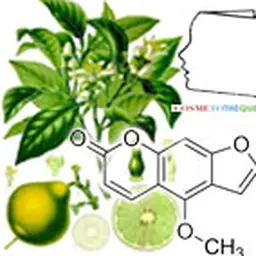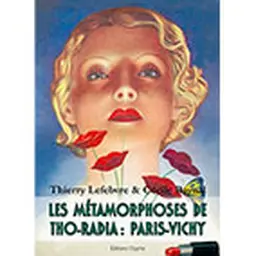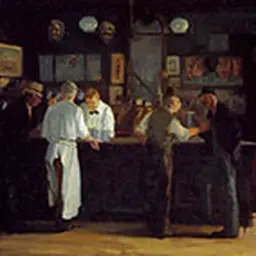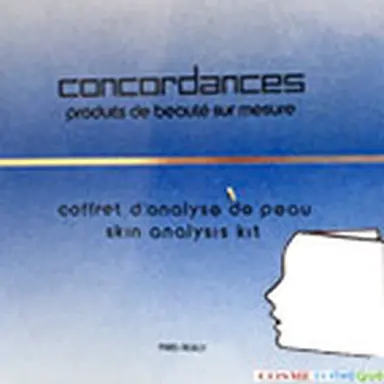
La Cosmétothèque offers you today to retrace an adventure, a project that carried within it many ferments of innovation… that confirmed brands are pursuing today with similar projects. And remember that sometimes being right too soon is a big wrong!
That is what we read in the press: "We knew for a long time that the current classification, oily skin, dry skin or normal skin was too simplistic and brought us to 90% in the same category. But now the development of alternative medicines has an unexpected consequence. By hearing that the body is a whole and that the radiance of our skin is only the reflection of this whole, we want skin care products that take into account our health, our lifestyle, the seasons and the environment. We want to be seen as unique beings, not as average anonymous clients who are given a"one-size-fits-all" cream. Message received. Custom methods and products are now available.
Banal, you may say, all this is not new and corresponds more or less exactly to what we regularly see in the specialized press. And this is what trend firms also describe for us. Except we're in 1987 (Marie-Claire Beauties Winter 1987 special issue) ! And that a rather interesting experiment will be set up under the leadership of a daring entrepreneur, François-Xavier Poëls. The idea was based on what was presented at the time as a revolution. It is a matter of personally and specifically making available to each woman the most recent advances in research and thus enable a new effectiveness in skin care.
Following a diagnostic check-up by a dermatologist using a questionnaire and a skin analysis kit, a prescription will indicate to each woman a different beauty treatment, which will be the most effective to improve the state of her epidermis. With this prescription and the perfumer's advice, the customer will be able to order from the laboratory his custom product delivered in one week. It's a kind of masterful preparation.
Today, we invite you to share this adventure with the help of the creator, François Xavier Poëls, whom we thank. This project was a ferment of innovation that would not be confirmed until later, both in terms of ingredients and diagnostic approach, and in terms of distribution. Because any innovation must build on those that have already preceded it, start-ups and established brands that are now engaged in similar projects would do well to look at what has already been done. And as François-Xavier says so well: Unfortunately, that's what happened, but as Richelieu said,"Being right too soon is a great wrong. . Enjoy your reading
Jean-Claude Le Joliff
Concordance, an avant-garde concept personalization of cosmetic products
In 1986, while we were very far from the concerns of personalization of the products, in spite of some unsuccessful attempts of American marks, François-Xavier Poëls launches Concordance, a company which produces and markets products of beauty to measure. An adventure that lasted only three years, but which foreshadowed the future trend of personalized products.
The Creator
François-Xavier Poëls is a graduate of HEC and holds a law degree. He worked for Orlane, Revlon, then Estée Lauder where he is general manager. He was 38 when he left Estée Lauder to launch Concordance in 1986.
After the Concordance adventure, François-Xavier Poëls worked for 10 years at Chanel as Managing Director France then Europe. In 1998, he launched Approche sur Mesure, a call center for clients of major luxury brands, a new adventure for him that he will lead to success.
The concept
Based on a skin diagnosis, Concordance was dedicated to providing each client with the cream she needed.
Skin diagnosis
No online diagnosis, no image analysis at the time, but the reception at the client's home of a box allowing the analysis of her skin thanks to two elements.
- A kit for making silicone impressions to measure wrinkles. Two impressions were taken, on the cheekbone and forehead. This kit is based on the use of a particular polymer called Silflo®.
The Silflo
is a two-component silicone paste used in the cosmetic industry to make skin impressions.
 Of fluid consistency, it flows in the hollow parts of the skin and reproduces perfectly and very faithfully the cutaneous micro-relief. The replicas obtained can thus be analyzed (microrelief, crow's feet wrinkles, scars, etc.). Silflo is delivered with a diluent and a catalyst. The diluent is used to fluidize the paste and the catalyst ensures polymerization or hardening of the polymer. This technique known as "skin replicas" has enabled significant progress to be made in evaluating the activity of cosmetic products.
Of fluid consistency, it flows in the hollow parts of the skin and reproduces perfectly and very faithfully the cutaneous micro-relief. The replicas obtained can thus be analyzed (microrelief, crow's feet wrinkles, scars, etc.). Silflo is delivered with a diluent and a catalyst. The diluent is used to fluidize the paste and the catalyst ensures polymerization or hardening of the polymer. This technique known as "skin replicas" has enabled significant progress to be made in evaluating the activity of cosmetic products.
|
- An in-depth questionnaire to know the client's care habits constructed in two parts: the skin (determination of phenotype / appearance of skin / appearance of scarring / skin and external agents) and lifestyle.
A diagnosis on Minitel was also proposed which will also know a good return. In this case, there was no skin print analysis.
The silicone impressions and all measurements are then sent to a laboratory for data analysis. The lab came from the medical field.
After 8 days, the client receives a personalized dermo-diagnosis at home which indicates the scientific characteristics of her epidermis: depth in microns of wrinkles, analysis of the appearance of the network of micro-depressions on the surface of the face, determination of the cutaneous age and probable evolution of the skin. An indication of the skin's hydration was given by an original method that related the skin's hydration to the shape of its streaks.
The personalized product
With the perfumer's advice, the customer can order her tailor-made product consisting of a cream and active supplements. - The 100% personalized crème magistrale. It is made only for the customer in a packaging in her name. With a single product day and night, we bring to the epidermis all the active elements it needs. Two versions are possible: soft nutrient for the light version and nutri plus for the creamy version. - The active supplements in the form of serum for the cure periods according to four themes : Cell regeneration to fight against wrinkles with Cyto Energy based on flavones, the cutaneous tone with Supra Ferme based on leucocyanidols which captures free radicals, Hydration with Hydro Generator based on polysaccharides, control of the sebaceous glands with Sebo Regulator based on triterpene to reduce sebaceous gland secretion. The active ingredients used were mainly flavonoids, polyphenolic compounds present in many organisms (plants, fruits and vegetables) and which are powerful antioxidants.
| Flavonoids (or bioflavonoids) are secondary plant metabolites all sharing the same basic structure formed by two aromatic rings linked by three carbons. Flavonoids are responsible for the varied colour of flowers and fruits and are an important source of antioxidants in our diet. They form a complex family including: flavones, flavonones, vials, Aurones, Chalcones. There are over 6,000 that have been described in plants. Flavonoids were discovered in 1936 by Albert Szent-Györgyi, who received the Nobel Prize in Physiology or Medicine in 1937. In the 1950s, Jack Masquelier of the University of Bordeaux undertook a study of flavanic compounds in pine bark and grape seeds and filed patents on the purification of oligomeric procyanidins (or pycnogenol) and their therapeutic uses. This work will largely contribute to the installation of the polyphenols concept which will become very popular in the 80s to experience significant growth from the 1990s. Several brands have used these concepts extensively in formulation: Caudalie, Chanel, Estée Lauder to name but a few. |
The industrial operator producing the tailor-made cream was the Kolmar Laboratory in Vincennes, a specialist in custom manufacturing, which later became BCM. The prices were 1 650 francs for the masterly cream, 290 francs for the Nutrisouple and 350 francs for the serums.
Marketing
The distribution network was mainly independent perfumeries spread over France (30), Italy (15) and Belgium (10).
Clients
In the first year, 5,000 pieces were sold, and over the three years of the concept's existence, 500 to 600 people bought the products, mostly scientists who understood the language of Concordance and high-income people.
Supporters
• The press The innovative concept had interested the whole profession as well with the female press as with the professional or economic press: reports on the creator and the concept in the French magazine of aesthetics but also the Figaro, Paris Match, Télé 7 jours, Le Monde, Le Nouvel Économiste… without counting the numerous papers present in the whole of the female press (Elle, Marie-Claire, Madame Figaro, Vogue, Cosmopolitan…) and the beauty press (Votre Beauté…)
• The investors The concept was initially supported by a group of investors, including the financial company Barclays, PO Bank (David de Rothschild). It was very new at the time that venture capital companies were interested in setting up a cosmetology company, but the concept was original enough to interest them. Concordance won an award at the Bred business creators' competition.
Reasons for stopping the concept
After three years of exercise, the concept does not achieve the desired results and is stopped. The main reasons : - a marketing network that was poorly adapted to this innovative concept. The sales consultants were not sufficiently trained on these niche products, which did not give them sufficient value. According to François-Xavier Poëls, the institutes would have been better adapted to the marketing of the concept; - the difficulty for women to accept to wait to have their tailor-made product which was certainly the ideal but that we wanted immediately; - an ambivalent acceptance of the concept that François-Xavier Poëls comments on with a sentence:"…". they didn't believe it, but they still thought if it worked, it would be too stupid for their girlfriend Sophie and not for them!"; - the lack of endorsement of the concept by a major brand, which for the time was a major obstacle; - high prices, which made it a niche product.
Contribution made by Régine Frick.
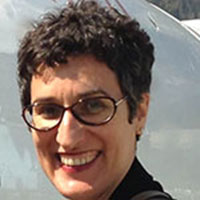 Régine Frick is a chemical formulation engineer and a CNAM graduate in innovation management, culture and marketing. She has worked for 12 years in research and development at Chanel parfum Beauté and has been a consultant since then in her three favourite fields, namely communication, innovation and development, for the cosmetic industries. From her technical and scientific skills, she uses as a consultant more particularly the science of mixtures associated with experimental designs to solve development problems. From her intellectual curiosity and her interest in society, she proposes to work with her clients on expected innovations. Her natural taste for communication has led her to write texts whose objective is to make scientific discourse accessible to everyone.
Régine Frick is a chemical formulation engineer and a CNAM graduate in innovation management, culture and marketing. She has worked for 12 years in research and development at Chanel parfum Beauté and has been a consultant since then in her three favourite fields, namely communication, innovation and development, for the cosmetic industries. From her technical and scientific skills, she uses as a consultant more particularly the science of mixtures associated with experimental designs to solve development problems. From her intellectual curiosity and her interest in society, she proposes to work with her clients on expected innovations. Her natural taste for communication has led her to write texts whose objective is to make scientific discourse accessible to everyone.
|

